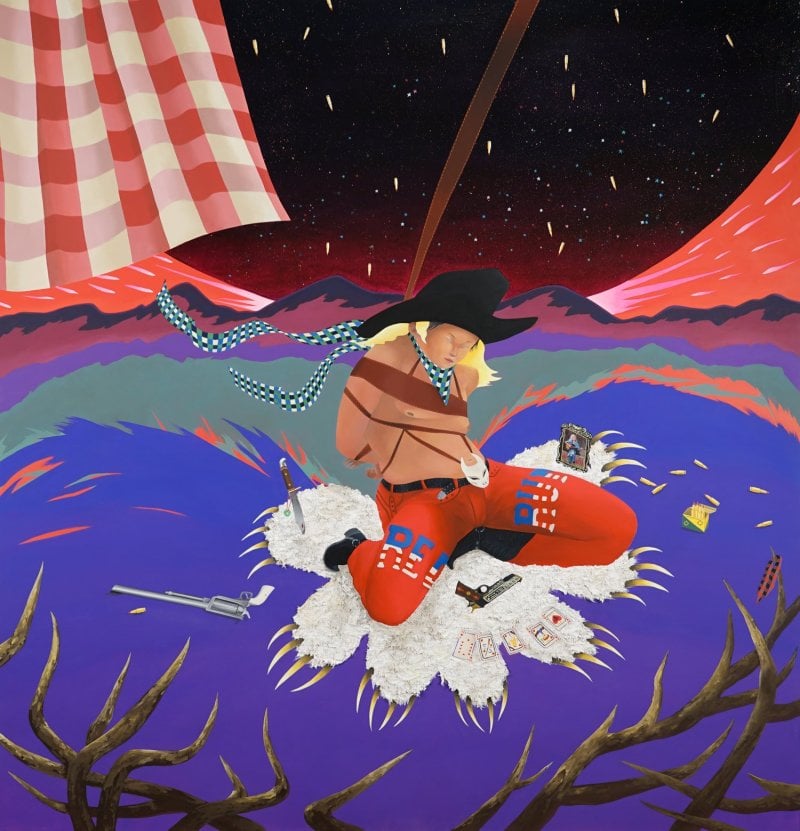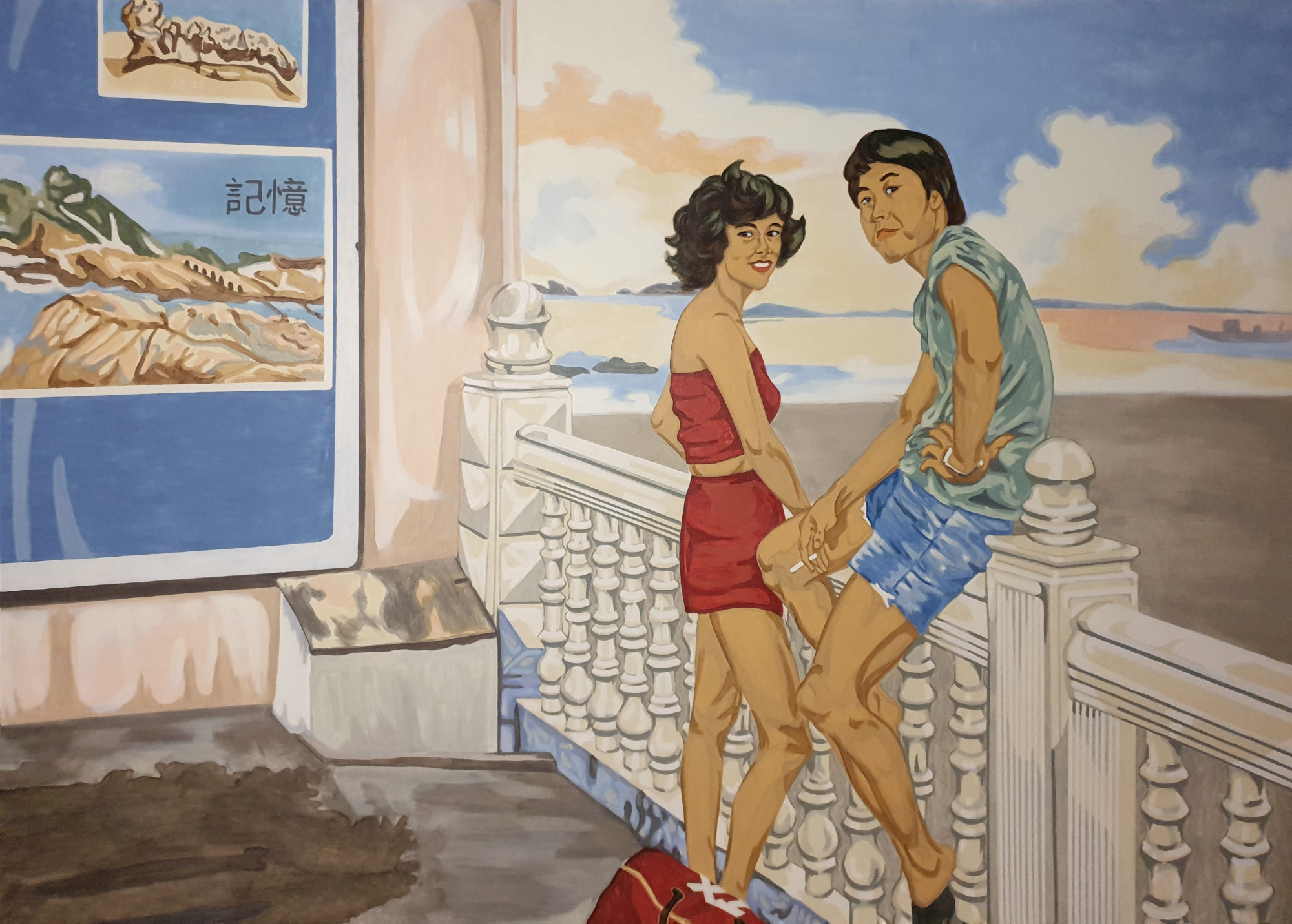When it comes to the art world, everything can (and should) be questioned, but not everything can be answered. That being said, Christina makes it her goal to undertake your visual art questions and give her take on the complexity, confusion and excitement of the art world. Please send your questions to arts ‘at’ stanforddaily.com – she’d love to seek answers with you!
Even though museums can often seem like edified, unchanging institutions, the artworks within their walls are anything but. Not only are artworks from a museum’s collection rotated within its galleries but new works are periodically added to the collection, whether they are acquired directly by the museum or gifted by donors.
I was happily reminded of this fact during my last visit to the Cantor Arts Center, when I saw small but eye-catching “New Acquisition” labels accompanying various artworks in the Pigott Family Gallery. With each new addition, the collection gradually shapes itself to reflect the museum’s (and in turn, Stanford’s) shifting cultural, educational and political concerns. Thrilled by the new acquisitions, I want to highlight two that you should see for yourself on your next visit to the museum.
Jiab Prachakul’s “Love from Three Continents (TX)” (2022)
“Love from Three Continents (TX)” is a large painting created by self-taught Thai artist Jiab Prachakul, who is now based in Lyon, France. The painting depicts a young couple who look out from the painting, presumably at the camera from which this “picture” was taken. There is a self-assuredness that exudes from the two figures’ relaxed postures and gentle expressions. Prachakul’s muted pastel color palette and organic brushstrokes infuse the scene with nostalgia, amplified by the couple’s dated but stylish clothing and haircuts.
The two figures are the parents of Micki Meng, the owner of the Friends Indeed Gallery that represents Prachakul. When galleries represent artists, they help to define retail prices for artworks, facilitate sales and exhibitions and build the artist’s reputation. In return, galleries get a share of the profits by sale, although specific agreements can differ depending on the artist-gallery relationship.
Prachakul portrays Meng’s parents shortly before they left Taiwan for the U.S. The work is part of her larger project of representing the immigration experience of her parents’ generation. What’s contained implicitly in this evocative painting is the couple’s youthful hope for their new life abroad and the unpredictable challenges of migration they will soon experience. Prachakul’s work is brilliant because it not only highlights concerns around Asian identity and migration but also presents a more widely relatable picture in its act of sentimental reminiscence. The rosy image reminds me of photos of my own parents in their twenties. Capturing my hopeful anxiousness about my future, Prachakul’s artwork makes me feel seen.
Yowshien Kuo’s “A Country Boy Meows” (2021)
To the left of Prachakul’s work is a painting by Missouri-based Yowshien Kuo, an artist who was educated in the U.S. and Taiwan. Kuo employs punchy colors, dominated by red and purple, to delineate a scene of cosmic fantasy. Instead of traditional painting materials, they incorporate bone ash, chalk and glitter onto the canvas, which are all substances with their own set of rich connotations. In addition, Western motifs populate the painting: in the center of the canvas is an androgynous figure who dons a cowboy hat, cowboy boots, a neckerchief and a belt with a skull. Featured elsewhere in the painting are guns, a dagger, playing cards, a bearskin rug, bullets and a mountainous landscape.
The painting creates a powerful tension through its juxtaposition of opposing elements. The figure featured in the painting is marginalized as a racialized, queer body yet is cloaked in popular American cultural iconography. They are kneeling on the ground and tied up in bondage, insinuating both violence and pleasure.
Kuo’s optically dazzling painting reveals more the longer one spends taking in its details. It raises questions about who we picture when we imagine the “Old West,” as well as what bodies we have been conditioned to see as desirable.

Both Prachakul and Kuo’s paintings have entered the Cantor’s collection as part of Stanford’s Asian American Art Initiative, which is committed to researching, collecting, exhibiting and creating programs related to artists of Asian descent. The establishment of this initiative at the Cantor demonstrates the museum’s increased dedication over the last few years to filling the gap in Asian American art scholarship and institutional presence. This is significant since a quarter of the residents of the San Francisco Bay Area identify as Asian, and the initiative is also a step in the University’s reckoning with its history, as a large part of Leland Stanford’s wealth came from the Chinese migrant laborers who built the Central Pacific Railroad.
These new acquisitions also indicate the museum’s move towards acquiring and displaying the works of more contemporary artists. Collecting works by younger artists who have less of an “established” market is usually seen as a risky move in investment terms. Thus, the Cantor’s support of emerging artists shows that they are prioritizing underrepresented artists and works with strong educational and historical value. By standing by artists who are at the forefront of remaking the contemporary arts scene, the Cantor too is slowly remaking and updating itself.
Editor’s Note: This article is a review and includes subjective thoughts, opinions and critiques.
